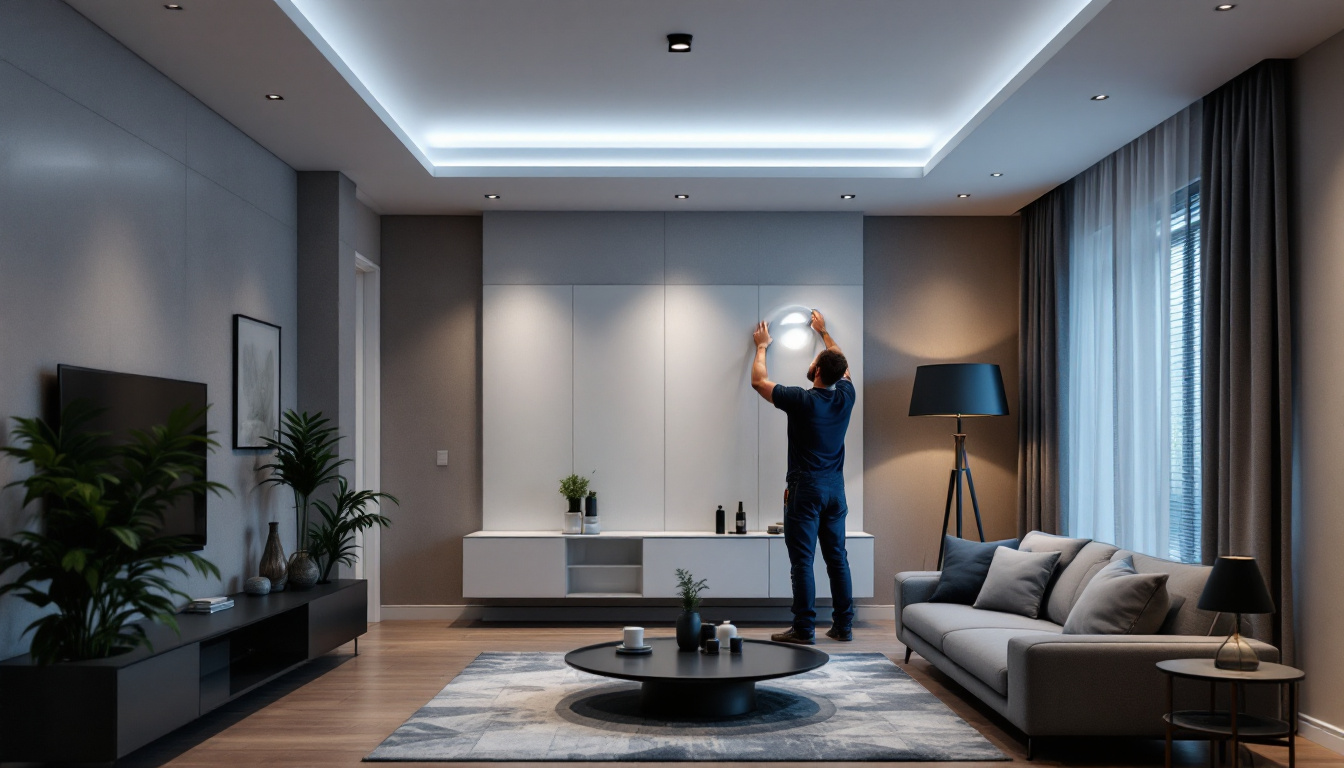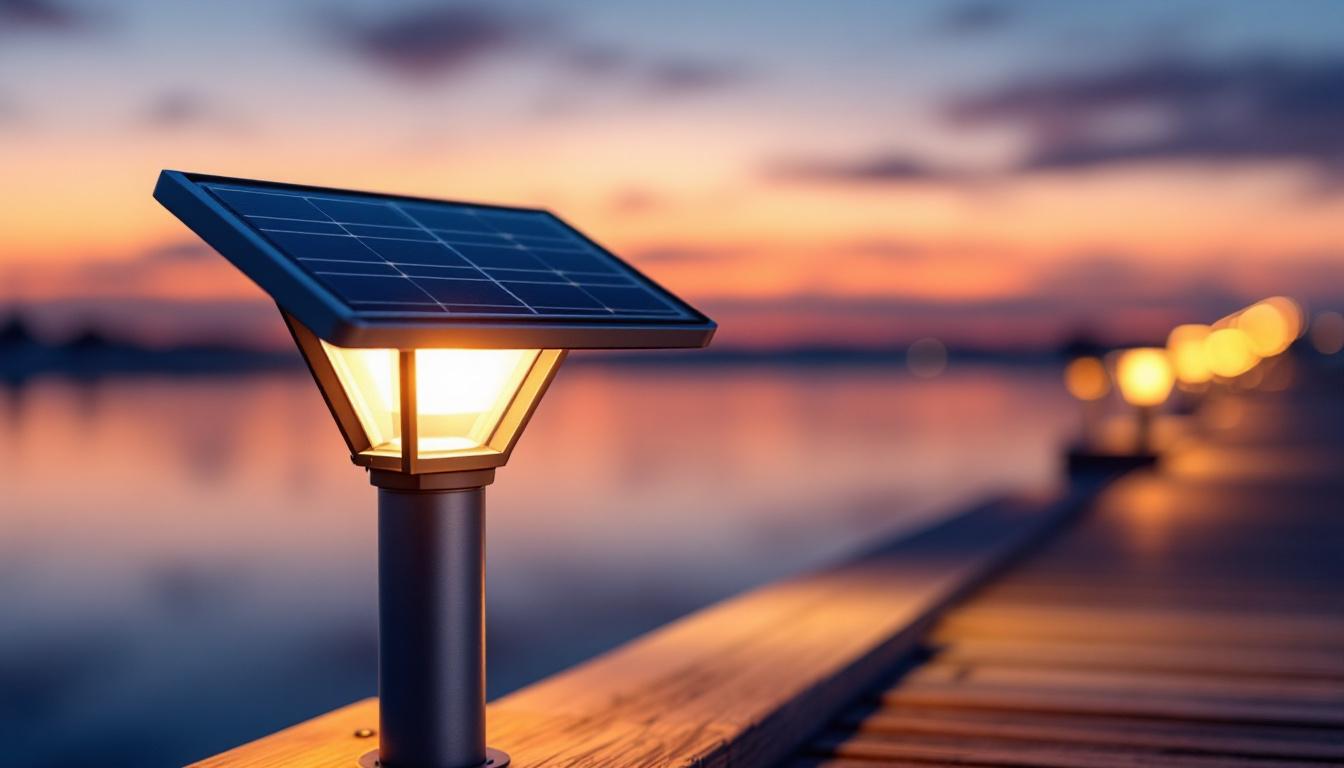
Lighting contractors play a crucial role in enhancing the ambiance and functionality of spaces through effective lighting solutions. One of the most popular options in modern lighting design is LED recessed lighting. This article explores four key aspects of LED recessed lighting that can help lighting contractors maximize their success in the industry.
LED recessed lighting has gained immense popularity due to its versatility, energy efficiency, and aesthetic appeal. Unlike traditional lighting fixtures, recessed lights are installed into the ceiling, creating a sleek and unobtrusive look. This type of lighting can be used in various settings, including residential, commercial, and industrial spaces. The seamless integration of these fixtures into ceilings not only enhances the overall design of a room but also allows for more effective use of space, making it a favored choice among interior designers and architects.
One of the primary advantages of LED recessed lighting is its energy efficiency. LEDs consume significantly less power than incandescent or fluorescent bulbs, leading to lower energy bills and a reduced carbon footprint. Additionally, they have a longer lifespan, which means fewer replacements and maintenance costs for contractors and their clients. The durability of LED lights also means they are less susceptible to breakage, making them a safer option in high-traffic areas. Furthermore, the instant-on feature of LEDs eliminates the warm-up time associated with other bulb types, providing immediate illumination when needed.
There are several types of LED recessed lights available, each designed for specific applications. Understanding these variations can help contractors choose the right fixtures for their projects. Some common types include:
In addition to these common types, there are also specialized LED recessed lights designed for specific environments. For instance, wet-rated fixtures are perfect for bathrooms or outdoor spaces, as they can withstand moisture without compromising performance. Moreover, there are smart LED recessed lights that can be controlled via smartphone apps or voice commands, allowing users to adjust brightness and color temperature to suit their mood or activity. This level of customization not only enhances convenience but also contributes to the overall ambiance of a space, making it more functional and enjoyable.
Another important consideration when selecting LED recessed lighting is the color temperature, which can significantly impact the atmosphere of a room. Ranging from warm white (around 2700K) to cool daylight (up to 5000K), the choice of color temperature can influence how colors appear and how inviting a space feels. Warm tones are often favored for living areas and bedrooms, creating a cozy environment, while cooler tones are ideal for workspaces, promoting alertness and focus. By carefully selecting the appropriate color temperature, designers can create a harmonious balance that enhances both aesthetics and functionality.
Adopting LED technology in recessed lighting offers numerous benefits that can enhance the overall lighting experience. For contractors, understanding these advantages can help in marketing their services effectively.
One significant benefit is the enhanced color rendering of LED lights. With a high Color Rendering Index (CRI), LED lights provide more accurate color representation, making spaces look more vibrant and inviting. This is particularly important in retail environments where product presentation is crucial. For instance, the right lighting can make colors pop, drawing customers’ attention and potentially increasing sales. Additionally, in residential settings, LED lights can create a warm and welcoming atmosphere, enhancing the overall aesthetic of living spaces.
Energy savings is another compelling reason to promote LED recessed lighting. By consuming less electricity, these fixtures contribute to lower utility costs for clients. This not only appeals to budget-conscious homeowners but also aligns with the growing trend of sustainability in construction and renovation. Furthermore, the longevity of LED lights—often lasting up to 25,000 hours or more—means that clients will spend less on replacements and maintenance, adding to their overall savings.
Moreover, the reduced environmental impact of LEDs cannot be overstated. By using less energy, they help decrease greenhouse gas emissions, making them a responsible choice for environmentally conscious clients. Contractors can leverage this aspect in their marketing strategies to attract eco-friendly projects. In addition to their energy efficiency, many LED products are also free of harmful substances such as mercury, which is commonly found in traditional lighting options. This makes them not only a safer choice for homes and businesses but also a more sustainable option for the planet. As more consumers prioritize eco-friendly choices, highlighting these benefits can significantly enhance a contractor’s appeal in a competitive market.
Proper installation is key to maximizing the performance and longevity of LED recessed lighting. Contractors should adhere to best practices to ensure that clients receive the best possible results.
First, it is essential to assess the space and determine the appropriate placement of fixtures. Factors such as ceiling height, room size, and the purpose of the space should be considered. Proper spacing between lights can prevent dark spots and ensure even illumination. For instance, in a living room, a more generous spacing might be appropriate to create a cozy atmosphere, while in a kitchen, closer spacing can enhance task lighting for cooking and food preparation.
When installing LED recessed lights, safety should always be a priority. Contractors must ensure that all wiring complies with local electrical codes. Using the correct gauge wire and ensuring secure connections can prevent electrical hazards and ensure the longevity of the lighting system. It’s also advisable to use junction boxes that are rated for the specific type of lighting being installed, as this can further enhance safety and performance.
Additionally, using fixtures with adequate heat dissipation is crucial. LEDs generate less heat than traditional bulbs, but proper ventilation is still necessary to prevent overheating and potential damage to the fixture or surrounding materials. Incorporating insulation contact (IC) rated fixtures can also be beneficial, as they are designed to be in contact with insulation without posing a fire risk. Furthermore, considering the use of dimmers can enhance energy efficiency and allow homeowners to customize the ambiance of their spaces, creating a versatile lighting solution that adapts to various activities and moods.
In a competitive market, effective marketing strategies can set lighting contractors apart. Promoting LED recessed lighting services requires a combination of education, showcasing benefits, and building a strong brand presence.
One effective approach is to educate clients about the advantages of LED technology. Providing informative materials or hosting workshops can help clients understand the benefits, making them more likely to choose LED recessed lighting for their projects.
Social media platforms can be powerful tools for reaching potential clients. By sharing project photos, testimonials, and informative content about LED recessed lighting, contractors can engage with their audience and build a loyal following.
Additionally, maintaining an updated website with a portfolio of past projects can enhance credibility. Including a blog section with tips and insights on lighting design can position contractors as industry experts, attracting more inquiries and leads.
Providing excellent client support is essential for building long-term relationships. Educating clients about the operation and maintenance of LED recessed lighting can enhance their satisfaction and trust in the contractor.
Contractors should offer guidance on how to adjust settings, change bulbs, and troubleshoot common issues. This not only empowers clients but also reduces the likelihood of service calls for minor problems.
Following up with clients after installation can significantly enhance customer satisfaction. A simple check-in can provide an opportunity to address any concerns and gather feedback on the installation process. This proactive approach can lead to referrals and repeat business.
Additionally, offering maintenance services or check-ups can create a steady stream of income while ensuring that clients’ lighting systems continue to perform optimally.
The lighting industry is constantly evolving, and staying ahead of trends is vital for contractors looking to maximize their success. Emerging technologies and design trends can influence the popularity of LED recessed lighting.
Smart lighting systems are becoming increasingly popular, allowing users to control their lighting through mobile apps or voice-activated devices. Contractors should consider integrating smart technology into their LED recessed lighting offerings to appeal to tech-savvy clients.
As design preferences evolve, so do the options for LED recessed lighting. Customizable fixtures that allow for different color temperatures, brightness levels, and even decorative trims are gaining traction. Contractors who can offer tailored solutions will stand out in the marketplace.
Additionally, understanding the importance of aesthetics in lighting design can help contractors provide valuable insights to clients. Offering design consultations can enhance the overall client experience and lead to more successful projects.
LED recessed lighting presents a wealth of opportunities for lighting contractors to enhance their services and grow their businesses. By understanding the technology, adhering to best practices, and effectively marketing their offerings, contractors can position themselves as leaders in the industry.
As the demand for energy-efficient and aesthetically pleasing lighting solutions continues to rise, embracing LED recessed lighting will not only benefit contractors but also their clients. By staying informed about emerging trends and prioritizing customer satisfaction, lighting contractors can maximize their success in this competitive market.
Ready to elevate your lighting projects with the efficiency and elegance of LED recessed lighting? Look no further than LumenWholesale for a vast selection of premium, spec-grade lighting products at unbeatable wholesale prices. Say goodbye to local distributor markups and hello to top-quality lighting that meets the highest industry standards. With LumenWholesale, you can enjoy the convenience of bulk buying with free shipping, ensuring you get the best value without any hidden fees. Make your next project shine with the perfect blend of quality, affordability, and convenience. Wholesale Lighting at the Best Value is just a click away.

Discover essential tips for lighting contractors to enhance outdoor patio spaces with solar lighting.

Discover how solar pier lights are revolutionizing the lighting industry, offering contractors a sustainable and cost-effective solution.

Discover essential tips and expert insights in “Light Balb: Mastering Tips for Lighting Contractors.” Elevate your lighting projects with innovative strategies, enhance client satisfaction, and stay ahead in the industry with practical advice tailored for today’s lighting professionals..

Discover how Lights America is revolutionizing lighting project efficiency with innovative solutions and cutting-edge technology.